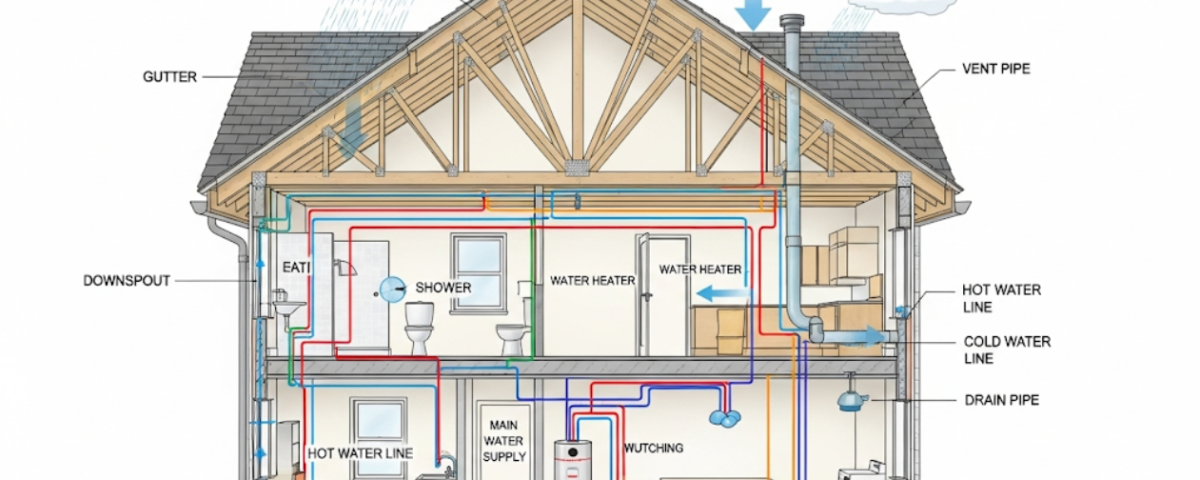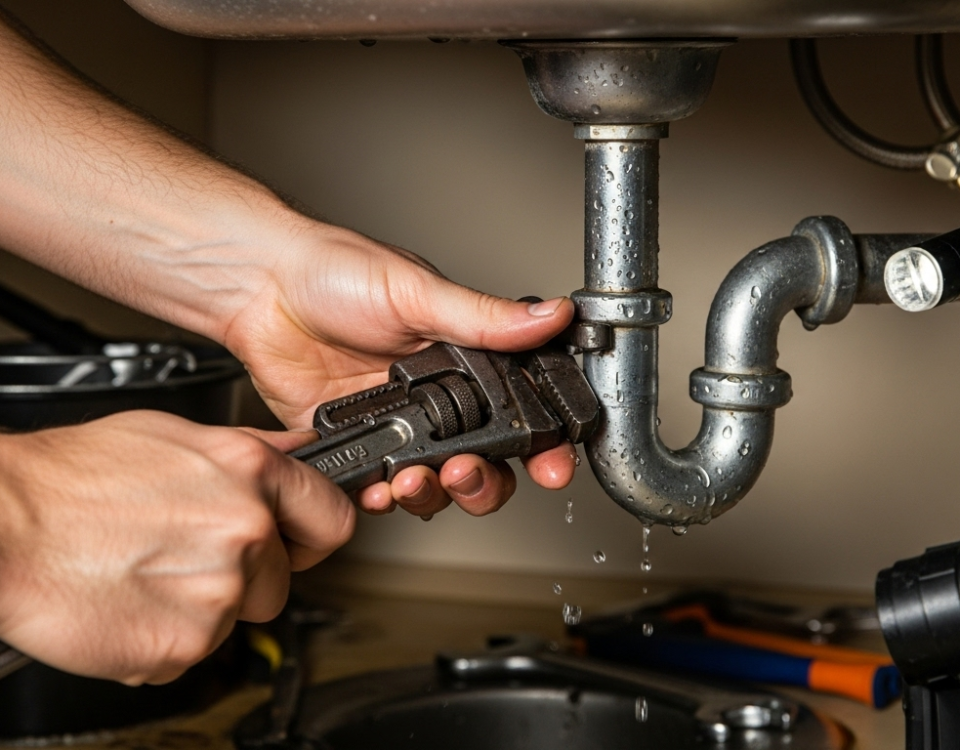Why Your Roof and Plumbing Are More Connected Than You Think

Metal Roof vs Tile Roof: Which Is Better for Malaysian Homes?
July 30, 2025
The Malaysian Home: Battling Tropical Weather from Roof to Drain
August 12, 2025Your home's roofing and plumbing systems are not independent entities; instead, they are intricately linked in the management of water. A seemingly minor leak in the roof can result in considerable damage to the plumbing, such as corroded pipes and widespread mold growth, by allowing water to drip onto pipes located in the attic or within the walls.
Moreover, plumbing vents on your roof that are not properly sealed can serve as direct access points for water, leading to concealed damage and potential health hazards. The essential function of adequate flashing is to safeguard these susceptible areas, and when it fails, it jeopardizes both the integrity of your roof and the interior of your home.
Tackling these concerns necessitates a comprehensive approach. By recognizing the connection between roofing and plumbing, you can identify issues early and invest in thorough solutions that shield your home from all perspectives.
A Leaky Roof Is a Plumbing's Worst Enemy
A leaky roof represents a homeowner’s worst nightmare, and rightly so. What you may not be aware of is that the water seeping from your ceiling is not only damaging your drywall—it could also be causing significant issues with your home’s plumbing.
In numerous residences, plumbing pipes are located in the attic or within the walls. A continuous roof leak can result in water dripping directly onto these pipes, which can lead to rust and corrosion over time. Even more concerning, if the leak remains undetected for a prolonged period, it can soak the insulation and wood surrounding the pipes, creating a perfect breeding ground for mold and mildew. This situation can undermine the structural integrity of your home and present serious health hazards. It creates a chain reaction: a minor roofing problem can escalate into a major plumbing repair and a comprehensive mold remediation effort.
The Danger of Improperly Sealed Roof Vents
Your plumbing system requires ventilation. This is the purpose of plumbing vents—those pipes protruding from your roof—which facilitate air entry into your drainpipes, thereby ensuring adequate water flow and preventing pressure accumulation. Nevertheless, these essential vents can become a significant vulnerability if they are not installed or sealed properly.
A vent that is either improperly sealed or damaged can serve as a direct access point for water. Rainwater can infiltrate around the pipe, trickle down into the wall cavity, and travel along the pipes, resulting in damage along its path. This concealed water intrusion creates an ideal environment for mold proliferation, which can silently spread throughout the walls and ceiling of your home. While a plumber may resolve a drainage issue, if the underlying cause—the improperly sealed roof vent—is not rectified by a roofing expert, the problem will persist.
Flashing: The Crucial Link Between Systems
Effective flashing serves as the often-overlooked protector of the areas where your roof’s surface is disrupted. This encompasses chimneys, skylights, and, most critically, your plumbing vents. Flashing is typically a thin material, often made of metal, that functions as a waterproof barrier. It channels water away from these susceptible points and directs it down the roof.
Should the flashing surrounding your plumbing vents or chimney be compromised, cracked, or incorrectly installed, it establishes a direct route for water to infiltrate your home. A qualified roofer possesses the expertise to properly install and seal flashing to avert this issue. While a plumber may observe the water damage internally, they must collaborate with a roofer to address the problem at its origin.
The Takeaway: One Problem Is Really Two
When a roofing problem results in a plumbing issue, you are not merely facing two distinct repairs; rather, you are confronting a singular, interconnected catastrophe. A minor roof leak has the potential to incur a significant plumbing expense, and an overlooked vent may pose a health risk. This underscores the importance of collaborating with professionals who possess expertise in both roofing and plumbing. They do not merely address the superficial issue; they conduct a thorough inspection of the entire system to identify the underlying cause. By viewing both your roof and plumbing as components of a unified system, you can achieve a more holistic solution, thereby averting future complications and safeguarding your home from within.
Summary
Your home's roofing and plumbing systems are not independent entities; instead, they are intricately linked in the management of water. A seemingly minor leak in the roof can result in considerable damage to the plumbing, such as corroded pipes and widespread mold growth, by allowing water to drip onto pipes located in the attic or within the walls.
Moreover, plumbing vents on your roof that are not properly sealed can serve as direct access points for water, leading to concealed damage and potential health hazards. The essential function of adequate flashing is to safeguard these susceptible areas, and when it fails, it jeopardizes both the integrity of your roof and the interior of your home.
Tackling these concerns necessitates a comprehensive approach. By recognizing the connection between roofing and plumbing, you can identify issues early and invest in thorough solutions that shield your home from all perspectives.


